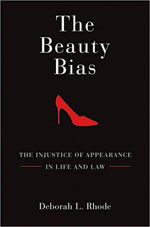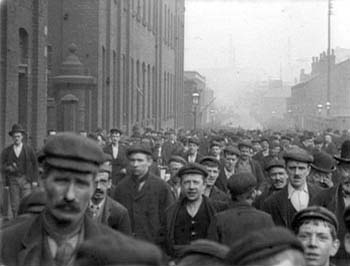Review: “The Beauty Bias” by Deborah Rhode

Today I review Deborah Rhode’s excellent book, “The Beauty Bias: The Injustice of Appearance in Life and Work” (Oxford University Press, 2010) for Working In These Times.
Here are a few additional thoughts I had on “The Beauty Bias”:
Rhode, a Stanford law professor, argues that appearance-based discrimination is a pervasive social problem that can be addressed, at least in part, through anti-discrimination laws. Workers report serious looks-based discrimination at about the same rate as gender or racial discrimination. Looks discrimination translates into lower wages, lower damage settlements, and countless other tangible harms.
Six cities and one state already have laws on the books banning various kinds of appearance-based discrimination. Contrary to the dire predictions of the “lawsuit abuse” crowd, Rhode’s analysis shows that these laws haven’t resulted in an avalanche of lawsuits. Michigan has banned height and weight discrimination since the 1970s. Michigan sees about 30 complaints and one lawsuit a year under the law.
The city of Santa Cruz bans discrimination based on any physical characteristic outside the individual’s control. It’s not clear whether the law protects tattoos or other permanent body modifications. No one has ever filed a complaint in the 15 years the law has been on the books.
That so few people assert their rights under appearance discrimination laws both helps and hurts Rhode’s thesis. Clearly, these laws are clearly not clogging the courts with frivolous litigation. On the other hand, it’s not clear that significant numbers of people would take advantage of these laws if they were enacted elsewhere.
Rhode is under no illusion that anti-discrimination laws can eliminate the injustice of appearance. However, she argues that simply having these laws on the books sends an important message that society will not condone this type of bias. The good these laws do might be invisible. Perhaps there are relatively few complaints in Michigan because the law deters employers from discriminating against fat and short employees in the first place? That’s an interesting testable hypothesis, but one that’s beyond the scope of “The Beauty Bias.”
As Rhode notes, most serious appearance related discrimination somehow intersects with gender, race, or some other protected status. So, victims may prefer to seek redress for appearance-related discrimination under existing anti-discrimination laws. Potential plaintiffs may anticipate that charges of sexism or racism will be taken more seriously than charges of lookism. There is empirical evidence that less attractive plaintiffs tend to get smaller damage awards, so it might be self-defeating to frame a legal grievance in terms of looks.
Rhode takes care to preemptively dismantle several straw men that her critics will be tempted to raise. She supports the right of employers to set reasonable grooming standards. She readily agrees that employers should be allowed to take appearance into account in certain occupations where beauty is integral to the job. Hollywood studios, modeling agencies, and strip clubs would have nothing to fear. Even Hooters might be in the clear if the chain would drop the “family restaurant” facade and admit that its servers are really practicing a no-contact form of sex work involving buffalo wings.
Rhode is brave for taking on the issue of lookism in our culture. She anticipates that she has an uphill battle in getting people to take the problem seriously, let alone to take action. “The Beauty Bias” is a good first step.





